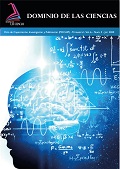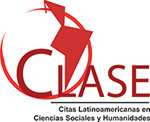Use of portfolios to develop formative assessment in an EFL class
DOI:
https://doi.org/10.23857/dc.v6i3.1317Palabras clave:
Authentic assessment, portfolios, formative and summative assessmentResumen
Assessment is part of instruction and the importance of this element has been analyzed and discussed in different investigations conducted in many settings. Also, literature review has demonstrated that assessment will always guide teachers'´ instruction to make decisions and check student’s progress. The two types of assessment formative and summative are very important tools for teachers in order to get a better and complete evaluation of their students. However, this article will be focused on portfolios assessment, which can be considered as formative assessment. Dell´Olio and Donk (2007) state that formative assessment is an ongoing process that directs instruction, which can be immediate or future. That is to say that a portfolio as a type of formative assessment is meaningful for teachers and students. Teachers can check students’ progress, while students are aware of their growth and identify their strengths. Also, it provides better self-esteem and motivation for students, who can understand better their own learning process including causes and consequences of each task they are developing. This article provides useful information that will help to understand how portfolios can be adapted in an EFL setting to evaluate language skills and make out the process of implementing this strategy in classes. As a new way of adapting mentioned assessment tool, it is shown how technology and new ways of making classes more interactive, try to introduce electronic portfolios, which represents the nowadays modern approach to formative assessments.
Citas
Baturay, M. H., & DaloÄŸlu, A. (2010). E-portfolio assessment in an online English language course. Computer Assisted Language Learning, 23(5), 413-428. doi:10.1080/09588221.2010.520671
Belanoff, P., & Dickson, M. (Eds.). (1991). Portfolios: Process and product. Portsmouth, NH: Boynton/Cook Heinemann.
Biggs, J. B. (1996). The teaching context: The assessment portfolio as a tool for learning. In Biggs, J.B. (Ed.), Testing: To educate or to select? Education in Hong Kong at the Crossroads, (pp. 227-271), Hong Kong Educational Publishing Co.
Burke, K.R., Fogarty, R. & Belgrad, S. (1994). The mindful school: The portfolio connection. Arlington Heights, Illinois: Skylight Training and Publishing.
Carney, Joanne (2001) Electronic and Traditional Portfolios as Tools for Teacher Knowledge Representation. Unpublished Dissertation, PhD, Univeristy of Washington, Seattle, WA.
Chang, M. Y. (2001). Application of portfolio assessment in education from the view of multiple intelligences. Educational Research Information, 9(1), 32-54.
Cheng, L., Rogers, T., & Hu, H. (2004). ESL/EFL instructors’ classroom assessment practices: purposes, methods, and procedures. Language Testing, 21(3), 360–389. https://doi.org/10.1191/0265532204lt288oa
Chau, J., & Cheng, G. (2010). Towards understanding the potential of e-portfolios for independent learning: A qualitative study. Australasian Journal of Educational Technology, 26(7), 932-950.
Cohen, V. L. (2008). Literacy fir children in an information age: Teaching reading writing, and thinking. Belmont: Thomson Wadsworth.
Crooks, T. (2001). The validity of formative assessment. Paper presented to the British Educational Research Association Annual Conference, University of Leeds, September 2001.
Dai, W. Y. (2003). Multiple intelligences and English teaching. Taipei: Shi Da Book.
Danielson, C. & Abrutyn, L. (1997). An introduction to using portfolios in the classroom. Virginia: Association for Supervision and Curriculum Development.
Dell´Olio, J. M., & Donk, T. (2007). Models of teaching: Connecting student learning with standards. Thousand Oaks: Sage Publications, Inc.
Farr, R. & Tone, B. (1994). Portfolio and performance assessment: Helping students evaluate their progress as readers and writers. Orlando: Harcourt Brace & Co.
Farris, P. J., Fuhler, C., & Walther, M. (2004). Teaching reading: A balanced approach for today´s classrooms. New York: McGraw Hill.
Fontana, D., & Fernandes, M. (1994). Improvements in mathematics performance as a consequence of self-assessment in Portuguese primary school pupils. British Journal of Educational Psychology, 64 (3), 407-417.
Frederiksen, J.R., & White, B.J. (1997). Reflective assessment of students' research within an inquiry based middle school science curriculum. Paper presented at the annual meeting of the American Educational Research Association, Chicago, IL.
Genesee, F. & Upshur, J. A. (1996). Classroom-based evaluation in second language education. Cambridge, England: Cambridge University Press.
Gibbs, G. (1992). Down with essays. The New Academic, 1 (2), 18-19.
Gottlieb, M. (1995). Nurturing student learning through portfolios. TESOL Journal, 5(l), 12-14.
Graves, Donald H. Portfolio Portraits, Portsmouth, NH, Heinemann Educational Books, Inc., 1992.
Hill, Bonnie C., Patricia Kamber and Lisa Norwick, "Ways to Make Student Portfolios More Meaningful and Manageable," Instructor (July/August, 1994), pp. 118-120.
Lo, Y.F. (2010). Implementing reflective portfolios for promoting autonomous learning among EFL college students in Taiwan. Language Teaching Research, 14(1), 77-95.
McCurdy, B.L., & Shapiro, E.S. (1992). A comparison of teacher monitoring, peer monitoring, and self-monitoring with curriculum-based measurement in reading among students with learning disabilities. Journal of Special Education, 26 (2), 162-180.
McMullan, M. (2006). Students' perceptions on the use of portfolios in pre-registration nursing education: A questionnaire survey. International Journal of Nursing Studies, 43, 333-343.
Meyer, Carol A. "What's the Difference Between Authentic and Performance Assessment?" Educational Leadership (May, 1992) pp. 39-40.
Moya, S. S., & O’Malley, J. M. (1994). A portfolio assessment model for ESL. The Journal of Educational Issues of Language Minority Students, 13(1), 13-36.
Nicole, D., & Macfarlane-Dick, D. (2006). Formative assessment and self-regulated learning a model and seven principles of good feedback practice. Studies in Higher education, 31(2), 199-218.
Norton, D. (2007). Literacy for life. Boston: Pearson Education, Inc.
Nunes, A. (2004). Portfolios in the EFL classroom: disclosing an informed practice. ELT Journal, 58(4), 327-335. doi:10.1093/elt/58.4.327
O'Neil, John. "Putting Performance Assessment to the Test," Educational Leadership (May, 1992), pp. 15-19.
Paulson, F. Leon, Pearl R. Paulson and Carol A. Meyer. "What Makes a Portfolio a Portfolio?" Educational Leadership, (February 1991 ), pp. 60-63.
Sadler, assessment in education, vol. 5, no. 1, 1998
Tierney, Robert J. Portfolio Assessment in the Reading - Writing Classroom, Norwood, MA, Christopher - Gordon Publishers, Inc., 1991. Tompkins, G. E. (2006). Literacy for the 21st century: A balanced approach. The United States of America: Pearson.
Publicado
Cómo citar
Número
Sección
Licencia
Authors retain copyright and guarantee the Journal the right to be the first publication of the work. These are covered by a Creative Commons (CC BY-NC-ND 4.0) license that allows others to share the work with an acknowledgment of the work authorship and the initial publication in this journal.







